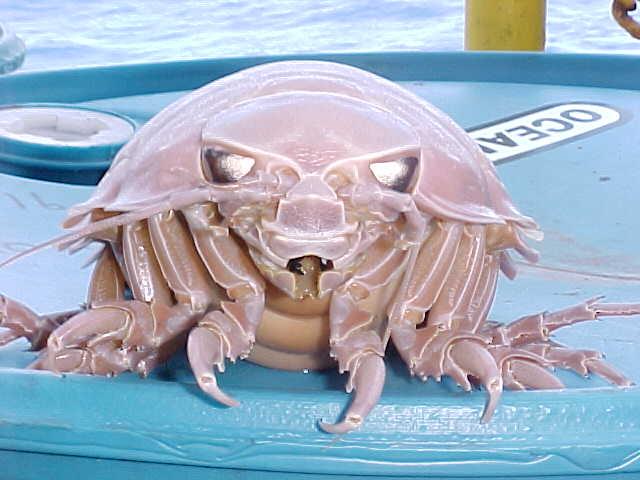|
Bathynomus Obtusus
A giant isopod is any of the almost 20 species of large isopods, crustaceans distantly related to shrimp and crabs, which are decapods, in the genus ''Bathynomus''. They are abundant in the cold, deep waters of the Atlantic, Pacific, and Indian Oceans.Lowry, J. K. and Dempsey, K. (2006). ''The giant deep-sea scavenger genus Bathynomus (Crustacea, Isopoda, Cirolanidae) in the Indo-West Pacific.'' In: Richer de Forges, B. and Justone, J.-L. (eds.), Résultats des Compagnes Musortom, vol. 24. Mémoires du Muséum National d’Histoire Naturalle, Tome 193: 163–192. '' Bathynomus giganteus'', the species upon which the generitype is based, is often considered the largest isopod in the world, though other comparably poorly known species of ''Bathynomus'' may reach a similar size (e.g., ''B. kensleyi''). The giant isopods are noted for their resemblance to the much smaller common woodlouse (pill bug), to which they are related. French zoologist Alphonse Milne-Edwards was the first ... [...More Info...] [...Related Items...] OR: [Wikipedia] [Google] [Baidu] |
Alphonse Milne-Edwards
Alphonse Milne-Edwards (Paris, 13 October 1835 – Paris, 21 April 1900) was a French mammalogist, ornithologist, and carcinologist. He was English in origin, the son of Henri Milne-Edwards and grandson of Bryan Edwards, a Jamaican planter who settled at Bruges (then in France). Milne-Edwards obtained a medical degree in 1859 and became assistant to his father at the ' in 1876. He became the director of the in 1891, devoting himself especially to fossil birds and deep-sea exploration. In 1881, he undertook a survey of the Gulf of Gascony with Léopold de Folin and worked aboard the ''Travailleur'' and the ''Talisman,'' researching the seas off the Canary Islands, the Cape Verde Islands, and the Azores. For this, he received a gold medal of the Royal Geographical Society. His major ornithological works include ' published in two parts in 1867 and 1872, ' 1866–1874 and ' 1868–1874. His study of fossils led to the discovery of tropical birds such as trogons and parrots from p ... [...More Info...] [...Related Items...] OR: [Wikipedia] [Google] [Baidu] |
